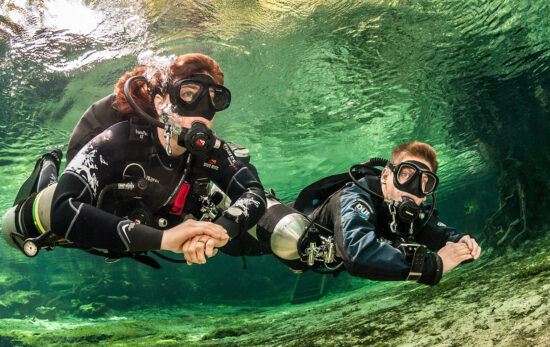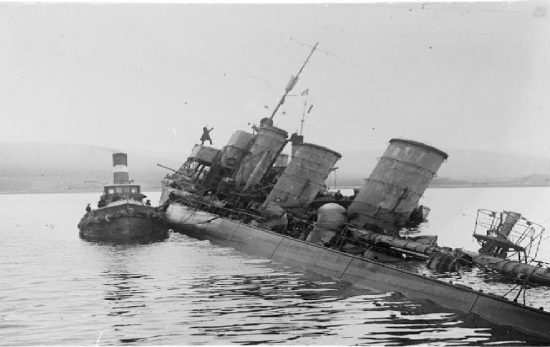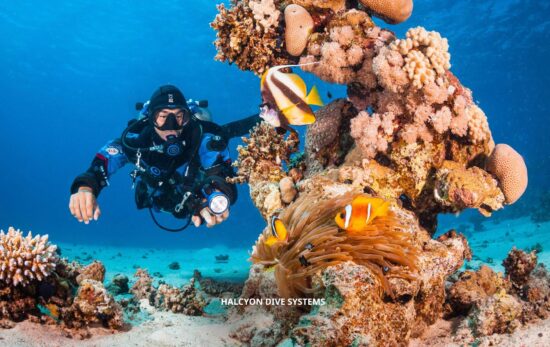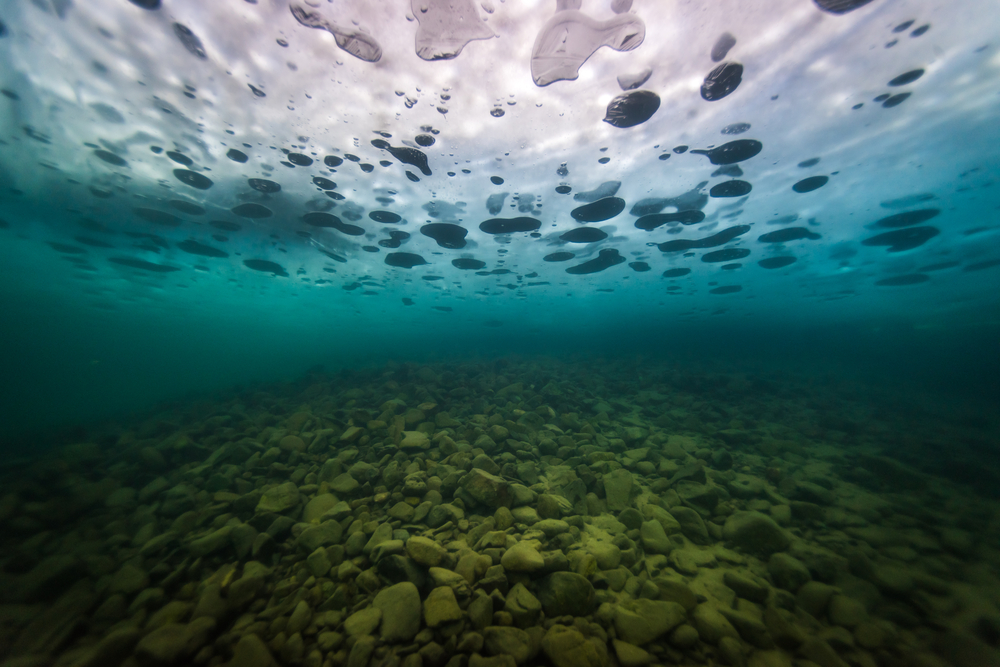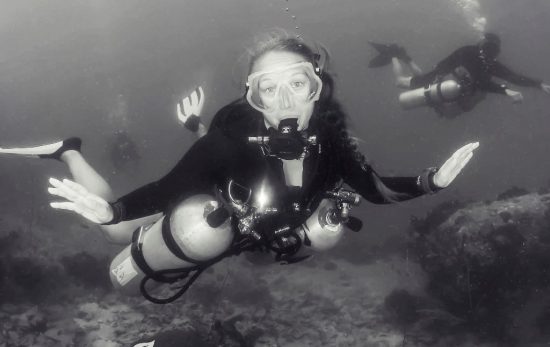This article was written by Martin Robson, PADI TecRec Trimix Instructor, Sidemount and Cave IT, and originally published on the TecRec blog on March 10, 2010.
When newer divers hear the word ‘sidemount’, many think it is a way of squirming into tight cave passages, which might not sound like fun, or it is just like carrying stage cylinders, but without any back-mounted cylinders.
Neither is strictly true. While side-mounted cylinders can allow suitably trained cave divers to enter caves which are too small to be dived safely in back-mounts and therefore minimize the impact they have on the cave environment, there are many and varied reasons for diving sidemount.
It could be that the dive site is not easily accessible, and so carrying separate cylinders is easier than a twin set. Similarly some divers choose side-mounts simply because the weight of a twin set on their backs is a little too much for them, for whatever the reason.
However, true sidemount configuration is not just like carrying stage cylinders minus the back-mounts. Stage cylinders, no matter how tightly attached, can have a tendency to hang below the diver’s body just a little. What we are aiming for with sidemount is to have the cylinders almost in line with our bodies when we are horizontal in the water and thus be nicely streamlined.
In order to do this, you will need some equipment specifically designed for sidemount. Broadly speaking this equipment comprises of some form of sidemount harness and a wing or other suitable buoyancy device.
There are definitely two schools of thought on these kit requirements. The American system, which can be seen a lot in the cave diving regions of Florida, has been developed from the combined ideas of both cave divers and more mainstream manufacturers. Typically this would be a soft harness originally designed for back-mounts (and still recognizable as such) but adapted to mount cylinders to the side. It also features a wing mounted to it (bear in mind there are no cylinders on your back to hold the wing in place). The other common option is a complete integrated harness and wing that are permanently fixed to each other.
The American systems are simple to use and do not require any user modifications (although of course we all like to personalize our dive kit). When diving, the cylinders tend to sit ‘lower down’. By this I mean that the cylinder valve will perhaps be as low down your torso as the bottom of your ribs, and if you stood up, the bottom of the cylinders can be as low as your knees. The other consideration with this style of equipment is that an integrated set up can weigh as much or more than a backplate and wing!
The ‘UK’ style of the sidemount system has been derived primarily from members of the Cave Diving Group (CDG) whose founders were cavers who turned to cave diving as a way of continuing their explorations when the caves they were penetrating took a turn underwater!
These set-ups are usually a lot less bulky and carry the cylinders a lot tighter and higher on the body to minimize the profile of the diver. Nowadays a number of commercially available harnesses are on the market which follow this simple and streamlined approach. Of course with a background from dry cavers, and the need sometimes to carry kit a long way underground prior to a dive, the UK set-ups are often very much lighter than their American counterparts. Some UK-style harnesses do need a little bit of modification to allow a wing to be fitted, but it isn’t a difficult thing to achieve, and some do have wing attachment kits available as an optional extra.
So if you fancy having a go, find yourself a sidemount Instructor and jump in. The equipment may look very different, but if you try it, you might find you like it so much that you never go back to your back-mounted cylinder(s).
Editors Note – This article discusses the evolution of sidemount equipment up to 2010, when the article was written. Since 2010, the USA system and UK system have continued to evolve. Although the two systems are still identifiable, most systems use elements of both and all designs are available from major diving manufacturers.




